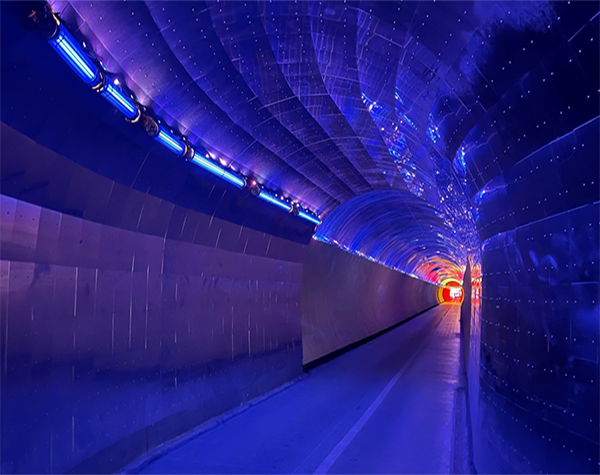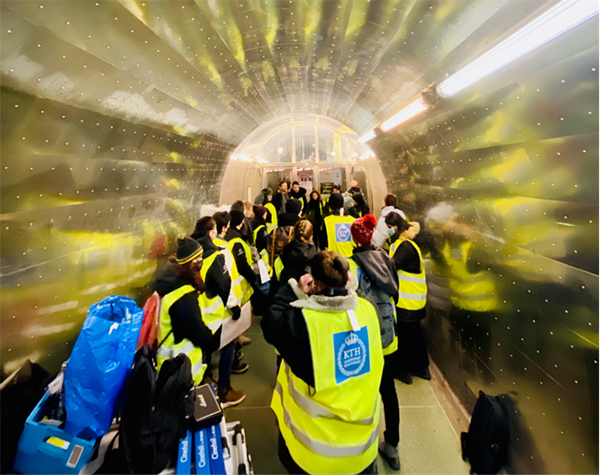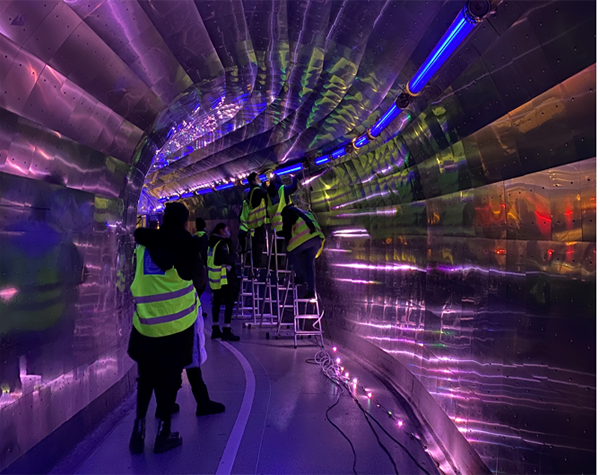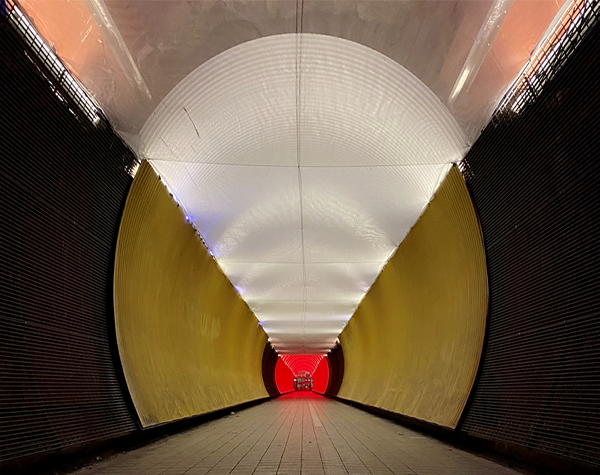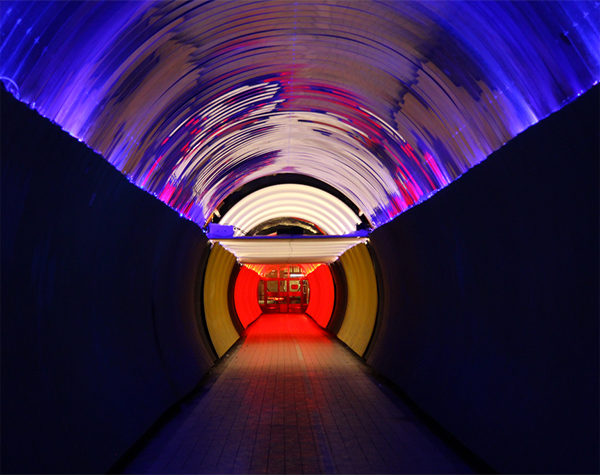Lighting Design Brighten Up Stockholm During Nobel Week Lights
Nobel Week Lights light up in different places around Stockholm. A place that has received a temporary sound and light guest is the Brunkeberg tunnel between Hötorget and Östermalm, where the artwork Riddle 102 is housed until the 12 December. Rodrigo Muro, Foteini Kyriakidou and master's students at KTH Architectural Lighting Design has designed the temporary experience inspired by Alfred Nobel.
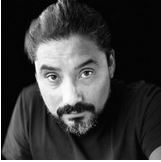
Rodrigo Muro is a Lighting Designer / Architect and Programme Director for the master's programme in Architectural Lighting Design. Foteini Kyriakidou is a Lighting Designer / Architect and course responsible. During the installation in the Brunkeberg tunnel, they have worked as lighting designers and also project and design managers.
How did this come about, how did you get involved in the Nobel Week Lights?
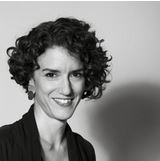
– We belong to the Lighting Design Division of KTH Architecture and we run the Master's programme in Architectural Lighting Design as well as the Studio of Daylight and Architecture along with our colleagues. Our interest in all lighting events is high and so we applied to the open Nobel call for artists and designers. After the approval, we started collaborating with the control specialist and the sound designers as well as our students on a voluntary basis.
Tell us about your installation!
– The Lighting Installation (Riddle 102) captures the binomial nature of Alfred Nobel’s character: His technical nature, by which he created numerous inventions such as Patent 102 (dynamite) for the benefit of humankind. But also, his artistic nature by which he wrote poetry such as the famous poem You say I am a riddle. Both of these gave inspiration to design the light installation at Brunkebergstunneln.
– The installation aims to be an immersive experience, altering the perception of the tunnel’s physicality. Much like the time continuum altered space into a new reality, the tunnel brings back the memory of the blasting (red/hot side) and freezing (blue/cold side) techniques that made its construction possible. The core of the tunnel will break as well as merge both experiences into a spatial riddle. Different luminous translucent surfaces will visually and emotionally connect to Hot and Cold concepts in order to bring mystery to the experience, and reshape the physicality of the tunnel. Additional multi-sensorial aspects, like sound, add richness to the immersive experience of the Lighting Installation.
What is the best way of exploring it? Do I need to bring anything?
– We would suggest to try to have a normal pace walk in the tunnel and let the light and sounds effects to carry you away. A normal walk takes about 2.5 minutes which will allow for a full loop of the lighting effect. If you stay longer you may experience the same lighting effect but with slightly different soundscapes, which are 9 in total and synchronized to the lighting control.
Contact
Credits:
– Lighting Design: Rodrigo Muro & Foteini Kyriakidou
– Lighting installation: Rodrigo Muro, Foteini Kyriakidou, students of the Architectural Lighting Design Master's Programme [Miray Altindis, Ines Bartl, Isa Byström, Gabriel Dos Santos Pinheiro, Elsa Frisén, Ana Karen Isaac Membrila, Tanzina Khan, Yanwei Liu, Alejandro Lizarralde, Seth Margolies, Monica Marin, Laura Müller, Anna Paraboschi, Helena Peres Caixeta Silva, Sergio Pérez, Jelena Popov Abouhanian, Grzegorz Robert Ruta, Avani Shah, Adrian Stapleton, Anusha Sullia Vijayananda]
– Sound Design: Ricardo Atienza & Robin McGinley, students of the Sound in Interaction course at Konstfack [Cecilia Enberg, Edith Fung, Jakob Hördegård, Jordana Samie Loeb, Nina Qi, Lars Johan Schalin, Jenny Waz]
– Lighting Control: Jim Farula
– Technical support: Signify and Stockholm Lighting


